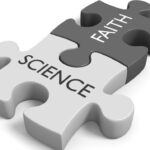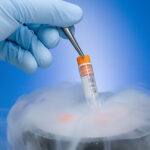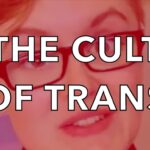No Human Cloning and Embryo Research
This week the Senate debates whether we allow embryo research and human cloning. The media often likes to argue that this is a battle between science and religion. Not really. It is a battle between good science and bad science. Between ethical science and unethical science.
There are many people and groups who are concerned about the new biotechnologies who come from a purely non-religious background. One such secular group is GeneEthics. Its director, Bob Phelps, has an article in today’s Australian (November 7, 2006) called “Embryo research a Pandora’s box”. In it he argues that the Senate should retain the parliamentary ban on human cloning.
The ban was put in place back in 2002. But Senator Kay Patterson (Liberal) has introduced a bill to overturn that ban. Interestingly, back in 2002 she was much more cautious: “Patterson’s amendment bill would legalise the creation of human embryo clones, but in 2002 she said: ‘I believe strongly that it is wrong to create human embryos solely for research. It is not morally permissible to develop an embryo with the intent of truncating it at an early stage for the benefit of another human being. However, utilising embryos that are excess to a couple’s needs after a successful implantation is a very different matter.’ Indeed, the 2002 law allowed researchers to use excess embryos created in IVF programs, but researchers and industry want a bigger and more permanent supply.”
If we do decide to go ahead with human cloning to produce stem cells, women will certainly be the big losers. “Women will be used as egg-producing machines: asked, induced or coerced to each give dozens of eggs for cloning, despite the risks to their lives and health from invasive surgical and hormone treatments. In the Lockhart inquiry, harvesting eggs from dead women and aborted female fetuses was also proposed. Eggs and embryos are seen by gene-manipulation and drug industries as mere raw material. Women egg and embryo producers would also be required to surrender control and connection with their eggs, embryos and resulting tissues. The companies and researchers would reap the rewards of patents.”
The method to be used is the same as was used to create Dolly the sheep. And the same complications exist: “British gene researcher Ian Wilmut used the embryonic cloning method in 1997 to clone Dolly the sheep, refilling an emptied egg case with the nucleus of an adult cell from her parent. Thousands of sheep eggs and hundreds of embryos were used to achieve one live birth. Many clones were aborted or born deformed.
“Dolly and other animal clones born since have died prematurely or been put down. They suffered various systemic disorders, the inherent results of destructive and poorly understood cloning processes. After Dolly was born, most people declared that embryo cloning must never be used on human beings. But advocates soon dreamed up justifications for cloning in human research and reproduction. Wilmut said, ‘Nobody should be attempting to clone a child.’ But now he accepts human embryonic cloning and heritable gene manipulation.”
But the Patterson bill will even allow for worse possibilities: “Some researchers have inserted human DNA into pig and cow eggs to create human-animal hybrids. Patterson’s bill would also pave the way for a future in which human-animal hybrid embryos could be created and implanted. Promises that such hybrid embryo clones would never be allowed to develop beyond 14 days cannot be trusted. The bill would not define an animal-human hybrid at the fetal or live-born stages as human, so research, and tissue or organ harvesting, might be allowed.”
The strange thing is, since the original 2002 Parliamentary decision, things have not improved one bit when it comes to embryonic stem cell use. “The likelihood of successful therapies from embryonic stem cell research has declined since 2002. Claims of therapeutic breakthroughs were mainly based on South Korean research but the results were fraudulent and the research has been discredited. Team leader Hwang Woo-suk also coerced junior women researchers into parting with thousands of eggs for the experiments. In contrast to failed embryo cloning, adult stem cell research does not involve harvesting eggs or creating embryos and shows good prospects of successful therapies. For instance, a report released last week said stem cells from umbilical cords, not embryos, were used to fabricate the beginnings of a human kidney.”
Concludes Phelps, “The global scientific and commercial genetic manipulation industries must not be allowed to set our publicly funded research priorities. Hundreds of millions of dollars of public money for embryo cloning could instead be spent to really improve the quality of life, especially for people with disabilities. When senators vote this week, they should reject the amendment bill and keep the bans on human cloning.”
Exactly right. The stakes are very high here. How the Senate votes this week may well determine if Australia heads further into a dark and uncharted brave new world, or heads into a brighter future for humanity and the smallest members of the human race.
http://www.theaustralian.news.com.au/story/0,20867,20711857-7583,00.html
[835 words]



















